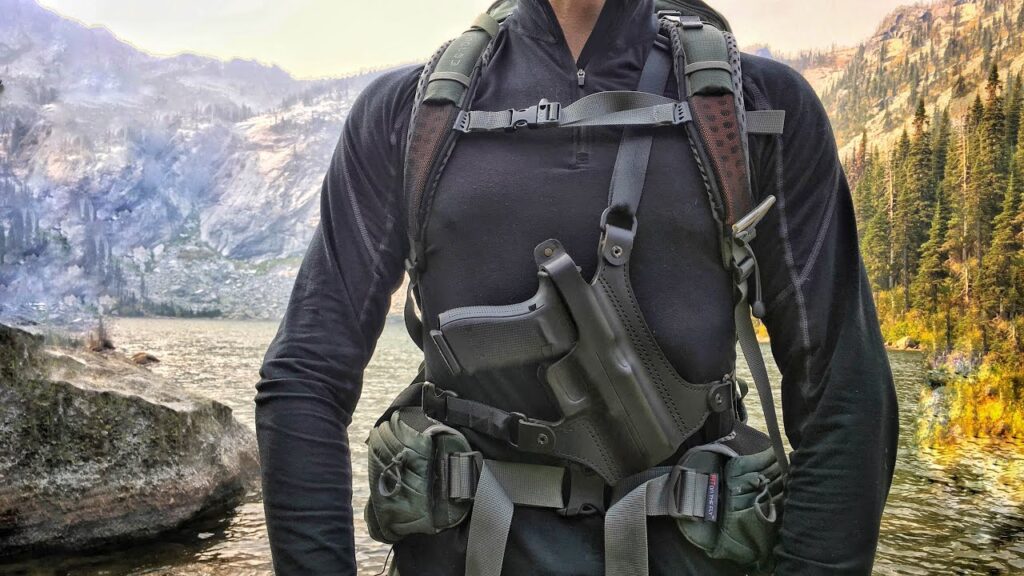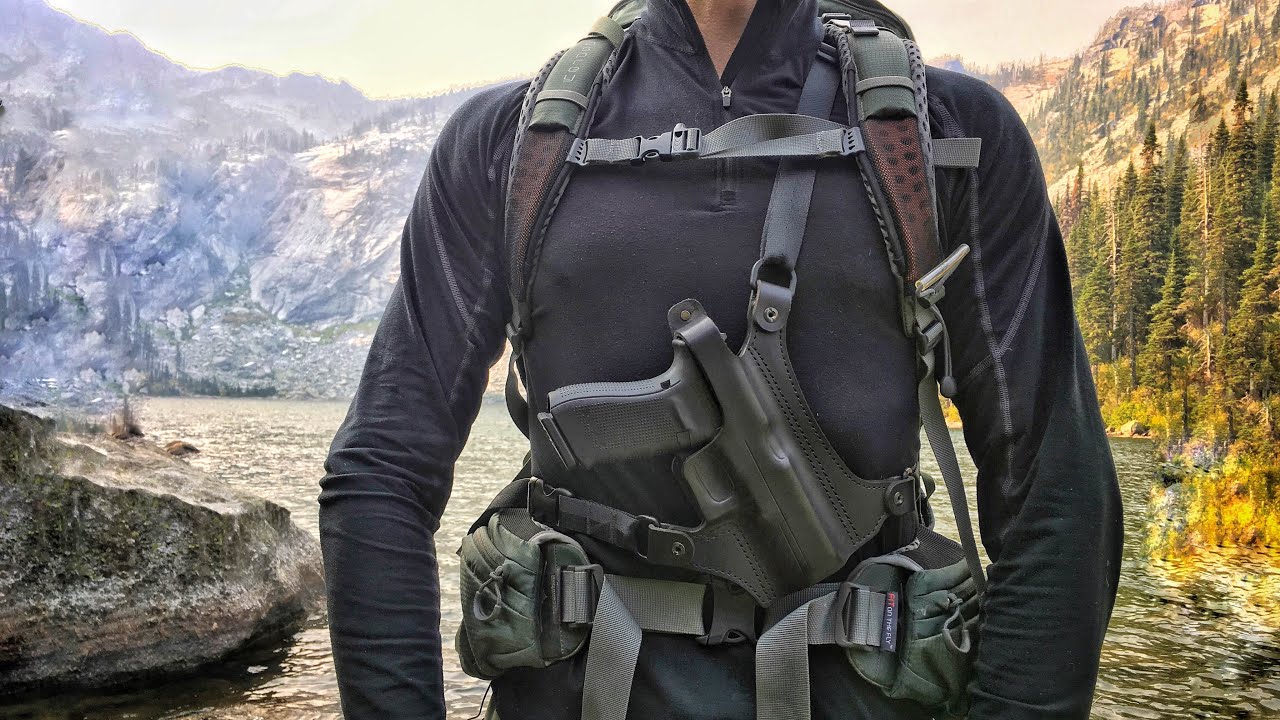
The Ultimate Guide to Chest Holsters: Comfort, Concealment, and Considerations
In the realm of concealed carry and outdoor preparedness, the chest holster stands out as a versatile and often overlooked option. Unlike traditional belt holsters or inside-the-waistband (IWB) configurations, a chest holster positions your firearm comfortably on your torso, offering a unique blend of accessibility, concealment, and weight distribution. This comprehensive guide will delve into the world of chest holsters, exploring their benefits, various types, factors to consider when choosing one, and best practices for usage. Whether you’re a seasoned outdoorsman, a law enforcement professional, or a concerned citizen seeking a comfortable and reliable carry method, understanding the nuances of the chest holster is crucial.
What is a Chest Holster?
A chest holster is a carry system designed to secure a handgun or other firearm against the wearer’s chest. It typically consists of a holster pouch or shell attached to a harness or straps that distribute the weight across the shoulders and torso. This configuration allows for hands-free carry and quick access to the firearm, making it particularly well-suited for activities where a traditional belt holster might be cumbersome or impractical.
Benefits of Using a Chest Holster
The popularity of chest holsters stems from their numerous advantages:
- Comfort: Distributes weight evenly across the torso, reducing strain on the hips and back, especially when carrying heavier firearms.
- Accessibility: Provides quick and easy access to the firearm, even when wearing bulky clothing or gear.
- Concealment: Can be concealed under a jacket, vest, or even a button-down shirt, depending on the size of the firearm and the design of the holster.
- Versatility: Suitable for a wide range of activities, including hiking, hunting, fishing, horseback riding, and off-road driving.
- Hands-Free Carry: Allows for hands-free movement and operation, which is essential for many outdoor activities and tactical situations.
- Protection from the Elements: Keeps the firearm protected from dirt, debris, and moisture, which can be particularly important in harsh environments.
Types of Chest Holsters
Chest holsters come in a variety of styles, each designed to meet specific needs and preferences. Here are some of the most common types:
Horizontal Chest Holsters
These holsters position the firearm horizontally across the chest. They are often preferred for their comfort and concealability, as they distribute the weight evenly and minimize printing. However, they may require more practice to draw from quickly and efficiently.
Vertical Chest Holsters
Vertical chest holsters orient the firearm vertically along the torso. They tend to offer faster draw speeds than horizontal holsters, but they may be less comfortable for extended wear and can be more difficult to conceal, especially with longer firearms.
Modular Chest Holsters
Modular chest holsters feature a base platform with interchangeable holster attachments. This allows you to adapt the holster to different firearms and carry configurations, making them a versatile option for individuals who own multiple handguns. These are often compatible with MOLLE systems, offering additional customization.
Tanker Holsters
Originally designed for tank crews, tanker holsters are a type of chest holster that sits high on the chest and is secured with a shoulder strap and a belt loop. They are known for their ruggedness and reliability, and they are often used by hunters and outdoorsmen.
Hybrid Chest Holsters
Hybrid chest holsters combine elements of different holster styles to offer a unique blend of comfort, concealment, and accessibility. For example, a hybrid holster might feature a leather back panel for comfort and a Kydex shell for retention.
Factors to Consider When Choosing a Chest Holster
Selecting the right chest holster requires careful consideration of several factors:
- Firearm Compatibility: Ensure that the holster is specifically designed to fit your firearm model. A proper fit is essential for retention, safety, and ease of draw.
- Comfort: Look for a holster with adjustable straps and padding to ensure a comfortable and secure fit. The weight distribution should be even across the torso to minimize strain.
- Concealment: Consider the level of concealment you require. If you plan to carry concealed, choose a holster that minimizes printing and can be easily concealed under clothing.
- Accessibility: Evaluate the speed and ease of draw. Practice drawing from the holster to ensure that you can access your firearm quickly and efficiently in a stressful situation.
- Durability: Choose a holster made from high-quality materials that can withstand the rigors of regular use. Look for features such as reinforced stitching and durable hardware.
- Adjustability: Ensure that the holster is adjustable to accommodate different body types and clothing. Adjustable straps and buckles are essential for a comfortable and secure fit.
- Retention: The holster should provide adequate retention to prevent the firearm from accidentally falling out. Look for features such as adjustable retention screws or molded Kydex shells.
- Intended Use: Consider the activities you will be engaging in while wearing the holster. A holster designed for hiking may not be suitable for tactical applications, and vice versa.
Materials Used in Chest Holsters
Chest holsters are typically made from a variety of materials, each offering its own unique set of advantages:
- Leather: Leather holsters are known for their comfort, durability, and classic aesthetic. They often require a break-in period to conform to the shape of the firearm, but they can provide excellent retention and concealment.
- Kydex: Kydex is a thermoplastic material that is known for its rigidity, durability, and resistance to moisture and chemicals. Kydex holsters offer excellent retention and are often preferred for their fast draw speeds.
- Nylon: Nylon holsters are lightweight, durable, and water-resistant. They are often less expensive than leather or Kydex holsters, but they may not provide the same level of retention or concealment.
- Hybrid Materials: Some chest holsters combine different materials to offer a unique blend of comfort, durability, and performance. For example, a hybrid holster might feature a leather back panel for comfort and a Kydex shell for retention.
Safety Considerations for Using a Chest Holster
As with any firearm carry method, safety is paramount when using a chest holster. Here are some essential safety considerations:
- Practice: Practice drawing from the holster regularly to develop muscle memory and ensure that you can access your firearm quickly and efficiently in a stressful situation.
- Dry Fire Practice: Use snap caps for dry fire practice to avoid damaging your firearm.
- Proper Holstering Technique: Always holster your firearm slowly and deliberately, ensuring that it is fully seated in the holster before releasing it.
- Trigger Discipline: Keep your finger off the trigger until you are ready to fire.
- Awareness: Be aware of your surroundings and avoid pointing your firearm at anything you are not willing to destroy.
- Maintenance: Regularly inspect your holster for wear and tear, and replace it if necessary.
- Secure Firearm: Always ensure your firearm is secured in the holster to prevent accidental discharge or loss.
Proper Adjustment and Fit
A properly adjusted chest holster is essential for comfort, accessibility, and safety. Follow these steps to ensure a proper fit:
- Adjust the Shoulder Straps: Adjust the shoulder straps so that the holster sits comfortably on your chest without sagging or riding up too high.
- Adjust the Chest Strap: Adjust the chest strap so that it is snug but not too tight. The strap should prevent the holster from shifting or moving around during activity.
- Adjust the Retention: Adjust the retention screws (if applicable) to ensure that the firearm is securely held in the holster but can still be drawn smoothly.
- Test the Fit: Move around and perform various activities to ensure that the holster remains comfortable and secure. Make adjustments as needed.
- Check for Printing: If you are carrying concealed, check for printing by looking in a mirror or having someone else observe you. Make adjustments to the holster or your clothing to minimize printing.
Maintenance and Care of Your Chest Holster
Proper maintenance and care will extend the life of your chest holster and ensure that it performs reliably. Follow these tips:
- Clean Regularly: Clean your holster regularly with a mild soap and water solution. Avoid using harsh chemicals or solvents that could damage the materials.
- Dry Thoroughly: After cleaning, dry the holster thoroughly with a clean cloth.
- Condition Leather: If your holster is made of leather, condition it regularly with a leather conditioner to keep it supple and prevent it from cracking.
- Inspect for Wear and Tear: Regularly inspect your holster for signs of wear and tear, such as frayed stitching, cracked leather, or loose hardware. Replace the holster if necessary.
- Store Properly: Store your holster in a cool, dry place away from direct sunlight and extreme temperatures.
Chest Holsters for Different Activities
The versatility of chest holsters makes them suitable for a wide range of activities. Here are some examples:
- Hiking and Backpacking: A chest holster allows you to carry a firearm comfortably and securely while hiking or backpacking, keeping it readily accessible in case of emergencies.
- Hunting: A chest holster keeps your firearm protected from the elements and easily accessible while hunting, allowing you to react quickly to changing situations.
- Fishing: A chest holster is a convenient way to carry a firearm while fishing, keeping it out of the water and within easy reach.
- Horseback Riding: A chest holster provides a secure and comfortable way to carry a firearm while horseback riding, preventing it from bouncing around or falling out.
- Off-Road Driving: A chest holster allows you to carry a firearm comfortably and securely while off-road driving, keeping it readily accessible in case of emergencies.
- Law Enforcement/Military: In tactical situations, a chest holster offers quick access and comfortable carry for officers and military personnel.
Legal Considerations
Before carrying a firearm in a chest holster, it is essential to be aware of all applicable federal, state, and local laws. These laws may vary depending on your location and the specific circumstances. Consult with a qualified attorney or law enforcement professional to ensure that you are in compliance with all applicable laws. [See also: Concealed Carry Laws by State]
Conclusion
The chest holster offers a unique and versatile carry option for those seeking comfort, accessibility, and concealment. By carefully considering the factors outlined in this guide and choosing a holster that is well-suited to your needs and preferences, you can enjoy the many benefits that a chest holster has to offer. Remember to prioritize safety, practice regularly, and be aware of all applicable laws. Whether you’re navigating the wilderness or simply seeking a more comfortable carry method, the chest holster can be a valuable addition to your gear. Ultimately, the best chest holster is the one that fits your firearm, your body, and your lifestyle the best, while providing a safe and secure carry method. Always prioritize training and responsible gun ownership.

